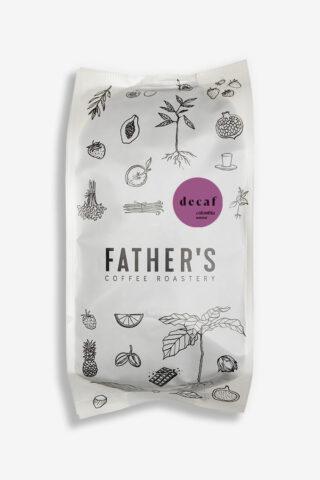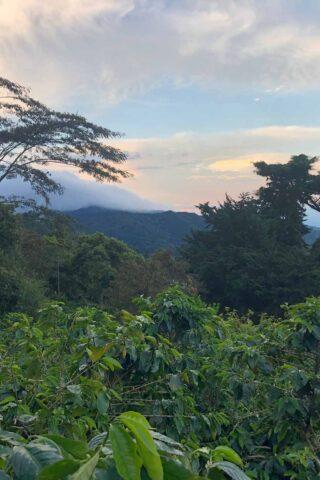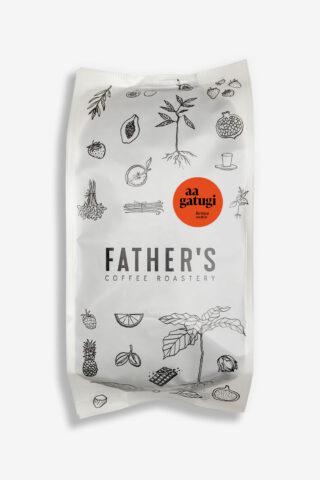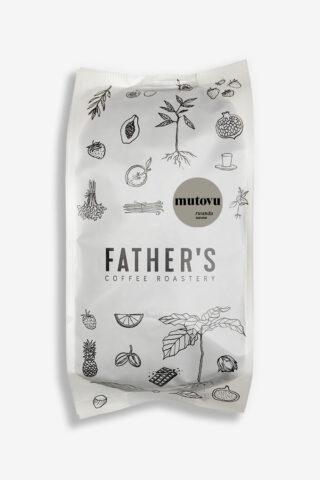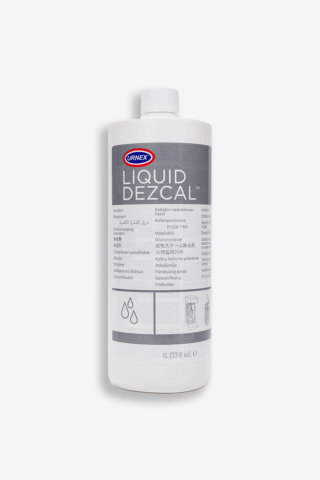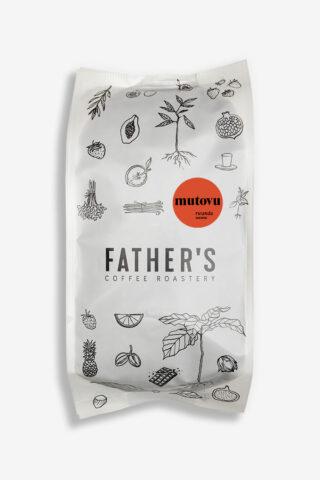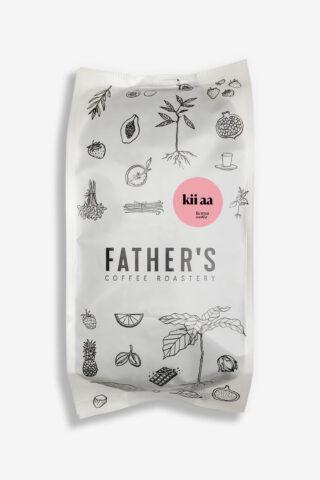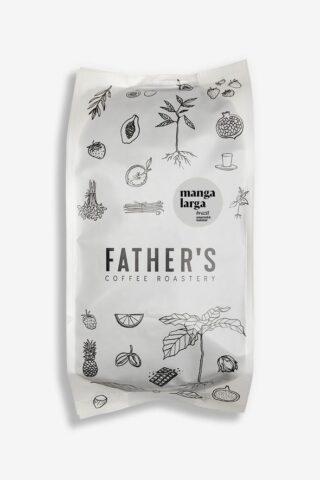19
Etiopie – Bombe – Washed
Vaše oblíbená Bombe pojmenovaná podle nádherných etiopských hor je zpět! Těšte se příjemný nádech černého čaje, jasmínu a sladkost medovníku. Svůj specifický až čajový profil má i díky svému zpracování – promyté suché fermentaci což je skvělá progresivní metoda, u kterého je minimalizovaná spotřeba vody.
Země: Etiopie
Oblast: Sidamo
Zpracovatelský závod: Bombe
Nadmořská výška: 2200 m n.m.
Odrůda: Heirloom (původní odrůdy)
Zpracování: suchá fermentace, promytá
Chuťový profil: jasmín, bergamot, černý čaj, medovník, meruňky
PRODUCENT
Producenti z Bombe a také z komunit Shantawene a Keramo dodávají své nejlepší třešně na stanici Bombe od sklizně roku 2017/18. Ta je vedena synem Asefa Dukamy (majitele a manažera stanice Daye Bensa) – který sem také dostal novou metodu zpracování suché fermentace, která je použitá právě u této kávy.
Mokrý mlýn je organizován a provozován týmem, jehož součástí je třeba agronomka Atkilt Dejene, která mimo jiné pracovala na oceňovaném projektu Gesha Village a nebo zpracovatelský specialista Eyasu Bekele. Kapacita na stanici Bombe je maximálně 2,5 milionu kg třešní a jsou nádhernou ukázkou udržení vysoké kvality i při větší kvantitě.
ZPRACOVÁNÍ
Speciální zpracování suchou fermentací je variací na tradiční promytý způsob zpracování kávy v Etiopii, ale využívá mnohem méně vody a tím je výrazně šetrnější k životnímu prostředí.
Káva se klasicky loupačkou zbaví slupky a dužiny, ale následná fermentace probíhá za sucha, v nádržích s kontrolovanou teplotou a bez přístupu vzduchu. Díky tomuto teplému a suchému prostředí začíná káva fermentovat mnohem rychleji, a to se projeví výrazně sladkou a komplexní chutí.
ODRŮDA
Etiopie je považována za kolébku kávy a její produkce se rovná bezmála 10% hrubého domácího produktu země. Odhaduje se, že v Etiopii rostou tisíce dosud nepopsaných odrůd, které ze země dělají region s největší kávovou biodiverzitou na světě. S ohledem na historickou tradici, způsob pěstování kávy v Etiopii a politickou situaci, je téměř nemožné najít jednodruhové/jednoodrůdové loty. Přestože se to v posledních letech začíná pomalu měnit, zatím je stále typickým označením odrůdy kávy z Etiopie Ethiopian heirloom varieties neboli etiopské původní odrůdy a to je to případ i této kávy.
We work with several couriers worldwide, the table HERE specify the conditions for each country.
If your country is not available please send us an email to info@fathers.cz.
Related Products
O tom, jak se z řidiče náklaďáku stal kávový farmář se dočtete níže. Důležitější ale je, že můžete ochutnat skvělou kávu, kterou dnes produkuje jeho syn, Josias Cardosa. Těšte se na chuťově lehoučkou a krémovou Brazílii se svěžími ovocnými tóny i sladkostí nutelly.
Země: Brazílie
Region: Minas Gerais, Ilicínea
Zpracovatelský závod: Comunidade Urtiga
Nadmořská výška: 1000 m.n.m.
Odrůda: Arara
Zpracování: naturální
Chuťový profil: nutella, jablko, Baileys, citrónová tráva
Naše káva bez kofeinu chutná po svěžím pomerančovém koláči, třtinovém cukru a bílém čaji. Zpracovali ji naturální metodou a potom zbavili kofeinu přírodním sugar cane způsobem. Více o této skvělé metodě se dočtete v článku na blogu tady.
Šálek této kávy se s klidem může stát vaším před spánkovým rituálem. Jeho název ATUNKAA, totiž v překladu znamená “spánek a ospalé sny”.
Země: Kolumbie
Oblast: Piendamó, Cauca
Farma: Siruma Coffee farmy
Nad. výška: 1700-1900 m n.m.
Odrůda: Castillo, Caturra, Colombia
Zpracování: naturální – sugar cane decaf
Chuťový profil: pomerančový koláč, třtinový cukr, bílý ča
Země: Kolumbie
Oblast: Pinchinde, Valle De Cauca
Farma: Inmaculada
Nadmořská výška: 1700 – 2000 m n.m.
Zpracování: natural
Odrůda: Geisha
Chuťový profil: lesní jahody, lemon curd, levandule
Sen jedné kolumbijské rodiny, který se stal skutečností. Farma Inmaculada, obklopená nádherným pohořím And, zhmotňuje lásku k přírodě a vděčnost komunitě v Pinchinde, ve které rodina už po několik generací žije. Pojďte se k nim na chvíli přenést s šálkem jejich naturálně zpracované Geishi Inmaculada — sladkost lesních jahod, jemná ovocná acidita, lemon curd a vůně levandule.
Země: Peru
Oblast: Perlamayo, Huabal
Farma: El Perlamayo
Nadmořská výška: 1800 – 1900 m n.m.
Odrůda: Caturra
Zpracování: washed
Chuťový profil: angrešt, lipový květ, panela
Na farmě El Perlamayo čelí rodina Rioja náročným podmínkám souvisejícím se změnou klimatu. Díky jejich oddané a pečlivé práci a inovativnímu přístupu k zemědělství, mohou i tak produkovat kávu vysoké kvality. Nás jejich promytá káva odrůdy Caturra zaujala především krásně vyváženou chutí s příjemnou ovocnou aciditou a dochutí sušené třtinové šťávy.
Země: Rwanda
Oblast: Karambi, Západní provincie
Nadmořská výška: 1760 m.n.m.
Odrůda: Red Bourbon
Zpracování: honey
Chuťový profil: čaj oolong, zelené jablko, bezová limonáda
Zpracovatelská stanice Gitwe leží na vrcholu horského údolí ve výšce téměř 2000 m.n.m. Dostanete se k ní po cestě lemované krásnými vzrostlými kávovníky a tropickými ovocnými stromy. S rozlohou menší než 1 hektar, jako nejmenší stanice v Západní provincii, produkuje nejlepší kávy v celé Rwandě.
My jsme si vybrali kávu zpracovanou honey metodou, která je v šálku příjemně čajová a sladká po bezovce.
Země: Keňa
Oblast: Kibugu, region Embu
Stanice: Gatugi
Nadmořská výška: 1800 m n.m.
Odrůda: SL14, SL28
Zpracování: washed
Chuťový profil: Rebarborový koláč, červený rybíz, vanilka
Země: Rwanda
Oblast: Nyamasheke, Západní provincie
Nadmořská výška: 1650 m.n.m.
Odrůda: Red Bourbon
Zpracování: natural
Chuťový profil: jahodový shake, mléčná čokoláda, bergamot
Na západě Rwandy, v malebné horské oblasti regionu Nyamasheke protéká řeka Mutovu, která v roce 2012 dala název nově postavené zpracovatelské stanici a poskytuje jí cenný zdroj vody. I když zrovna naše káva byla zpracovaná suchou metodou a při jejím zpracování moc vody zapotřebí nebylo. Díky této metodě je chuť kávy komplexní, plná a sladká.
Těšte se na kávu co chutná jako mléčný shake ze šťavnatých letních jahod.
Profesionální přípravek na odstranění vodního kamene. Efektivně odstraní i ty nejtvrdší usazeniny bez poškození zařízení. Složen z biologicky odbouratelných a bezpečných složek.
Řeďte v poměru 30 ml přípravku na 1 l objemu na vodu čištěného zařízení.
Objem: 1 L
Only 1 left in stock
Země: Rwanda
Oblast: Nyamasheke, Západní provincie
Nadmořská výška: 1650 m.n.m.
Odrůda: Red Bourbon
Zpracování: natural
Chuťový profil: jahodový shake, mléčná čokoláda, bergamot
Na západě Rwandy, v malebné horské oblasti regionu Nyamasheke protéká řeka Mutovu, která v roce 2012 dala název nově postavené zpracovatelské stanici a poskytuje jí cenný zdroj vody. I když zrovna naše káva byla zpracovaná suchou metodou a při jejím zpracování moc vody zapotřebí nebylo. Díky této metodě je chuť kávy komplexní, plná a sladká.
Těšte se na kávu co chutná jako mléčný shake ze šťavnatých letních jahod.
Země: Keňa
Oblast: Kibugu, region Embu
Stanice: Kii
Nadmořská výška: 1800 m n.m.
Odrůda: SL34, SL28
Zpracování: washed
Chuťový profil: rybíz, angrešt, černý čaj
Plné krémové tělo, mléčná čokoláda a květinové aroma. To vše můžete najít v šálku našeho espresso blendu Mother Ship.
Bude radost s ním pracovat jak v kavárně, tak u vás doma: je totiž skvělým základem pro vaše mléčné nápoje, ale zároveň nezklame žádného fanouška čistého espressa.
Aktuálně jsme směs namixovali z promyté kávy z Peru a naturálně zpracované kávě ze Rwandy. Obě kávy přináší do šálku to nejlepší ze svého původu a společně vytváří nádherně vyváženou chuť, které nic nechybí.
Země: Rwanda
Oblast: Karongi, Západní provincie
Zpracovatelský závod: Gishyita
Nadmořská výška: 1640 m n.m.
Odrůda: Red Bourbon
Zpracování: natural
Země: Peru
Oblast: Jaen, Cajamarca
Zpracovatelský závod: Ande Peruanos
Nadmořská výška: 1800 – 1900 m n.m.
Odrůda: mix
Zpracování: washed
Chuťový profil: plné krémové tělo, mléčná čokoláda a květinové aroma
Země: Brazílie
Region: Tres Pontas, Sul de Minas
Zpracovatelský závod: Rancho Grande
Nadmořská výška: 950 m.n.m.
Odrůda: Topazio
Zpracování: anaerobní
Chuťový profil: datle, Baileys, citrónová tráva
Kávy z Brazílie jsou obecně považovány za chuťově konzervativnější a pro někoho až nezajímavé. To rozhodně neplatí pro naši Brazílii Manga Larga, která překvapí ovocnými a funky chuťovými tóny. Jsme rádi, že se nám již potřetí podařilo koupit velkou část sklizně farmy Rancho Grande z jejich projektu Manga Larga. Těšit se můžete na neobyčejnou chuť, kterou v brazilských kávách najdete málokdy, a to výrazné tóny Baileys, citronové trávy a datlí.







